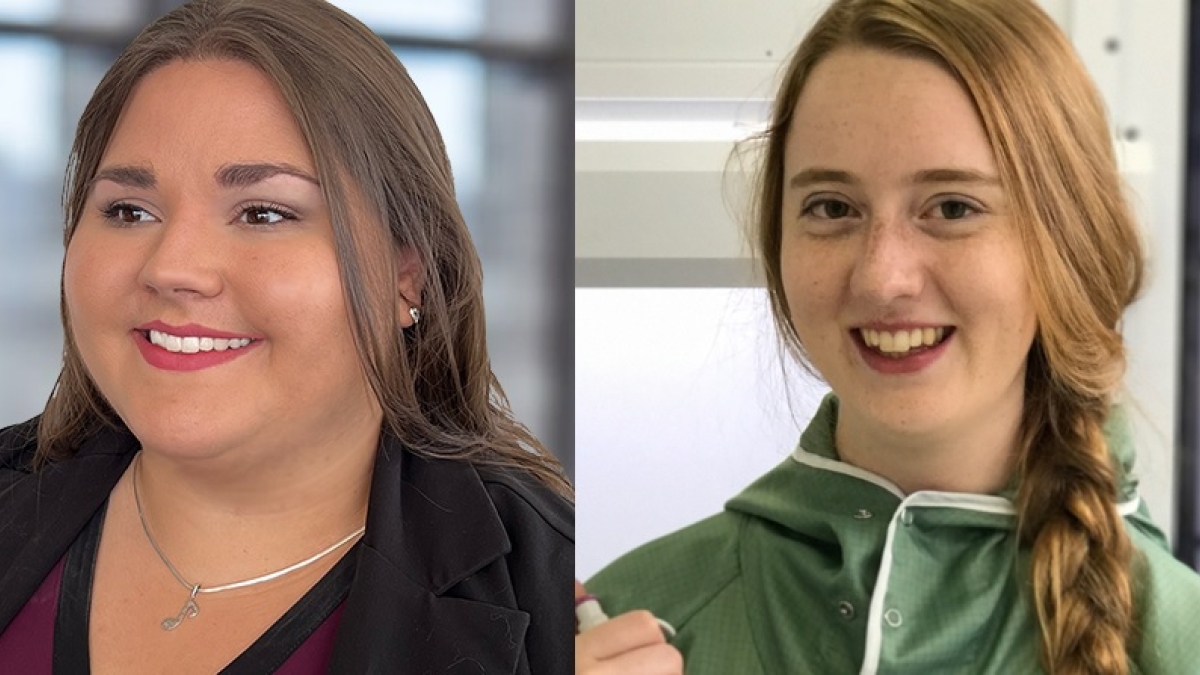Up in smoke: Student research collaboration bears fruit

Alyssa Sherry (left) and Logan Tegler
After years of unprecedented wildfire seasons that brought a smoky haze to areas far beyond its point of origin, it comes as no surprise that the fine particles these wildfires produce can travel great distances.
What does come as a surprise, said Arizona State University President’s Professor Ariel Anbar, is that “those particles can carry a lot of iron to remote parts of the ocean, where it’s a vital nutrient.”
But knowing where that iron came from was another story — until now.
A research collaboration between onetime ASU undergraduate Logan Tegler and graduate student Alyssa Sherry, working in both the School of Molecular Sciences and the School of Earth and Space Exploration, has determined that the iron from biomass burning — the burning of living or dead vegetation — comes from the soil, not the foliage.
Their findings were published recently in Global Geochemical Cycles.
Knowing where the iron comes from has implications for the health of ecosystems in regions where it is lofted.
For example, “A devastating wildfire in one part of the world can cause algae to bloom in the ocean on the other side of the world,” said Anbar, Howard Hughes Medical Institute Professor in both the School of Molecular Sciences and the School of Earth and Space Exploration, who — along with School of Molecular Sciences Professor Pierre Herckes — served as Sherry’s research advisor. “It’s a remarkable example of how connected our planet is, in ways that are often unexpected.”
It’s also an opportunity to potentially prevent things like algae blooms by reducing the amount of iron in soil in places where wildfires are common.
The benefits of student-led research
The work that went into Tegler and Sherry’s findings is a great example of ASU’s commitment to providing opportunities for student-led research.
Sherry got the ball rolling with a series of controlled burn tests to determine how much iron is released into the air when different plants burn. Tegler joined the project soon after, eventually taking it over when Sherry left to spend a summer in Bermuda as a student of the BIOS program. At the end of the summer, Tegler had generated enough data to present her results at the American Geophysical Union Fall Meeting.
At the meeting, Tegler met professor Tristan Horner, who she subsequently wrote an NSF research proposal with, and who served as one of her PhD advisors at the MIT/WHOI Joint Program. This accomplishment was particularly meaningful because it not only allowed Tegler to refine her laboratory and presentation skills, but also set her on the path toward her doctoral degree.
“I started working with Alyssa as a college sophomore and just defended my PhD last week,” Tegler said in a recent interview. “Now I’m on to a postdoc at the University of Hawaii at Manoa. My postdoc project is also focused on marine iron. It’s been an incredible journey, and I’m very grateful to Alyssa, Ariel, Pierre and ASU for getting me started on this track.”
Sherry completed a law degree at ASU after graduate school in the School of Molecular Sciences and is currently working as a patent attorney at Fisch Sigler.
More Science and technology

Swarm science: Oral bacteria move in waves to spread and survive
Swarming behaviors appear everywhere in nature — from schools of fish darting in synchrony to locusts sweeping across landscapes…

Stuck at the airport and we love it #not
Airports don’t bring out the best in people.Ten years ago, Ashwin Rajadesingan was traveling and had that thought. Today, he is…

ASU in position to accelerate collaboration between space, semiconductor industries
More than 200 academic, business and government leaders in the space industry converged in Tempe March 19–20 for the third annual…

